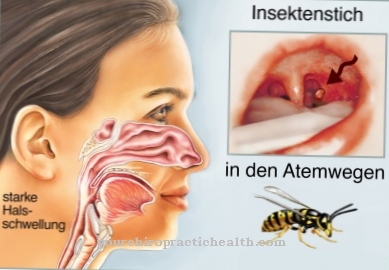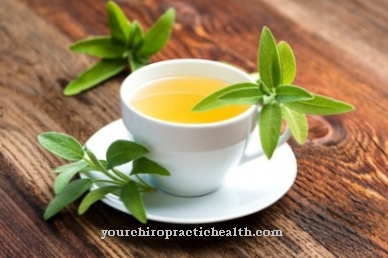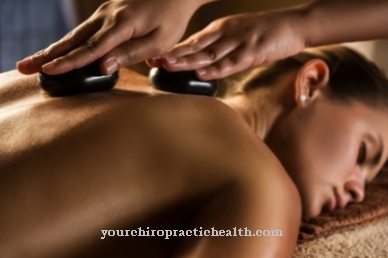At Varicose veins (varicose veins) the veins are knotty and dilated. All veins have "valves" that prevent the blood flow from flowing back. However, these become weaker over the years. The veins become loose, which in turn causes swelling. Varicose veins are observed much more frequently in women than in men. However, there are different home remedies to counter varicose veins in self-help.
Which home remedies help against varicose veins?

Anyone prone to varicose veins should definitely refrain from standing or sitting for long periods. If you change your position as often as possible, you prevent the blood from sinking inside the lower legs, so that varicose veins can largely be avoided or reduced.
The circulation of the blood can be significantly improved with a gentle massage and supports the body against varicose veins. At best, the muscles (not directly on the veins) should be pressed with both thumbs and slowly stroked towards the heart. If the varicose veins are still small, support tights can be an optimal solution. This exerts external pressure on the veins so that they do not have the opportunity to swell quickly.
The trade offers a large selection of support tights in pharmacies and department stores, which are much more pleasant and aesthetic these days. In order to take regular action against varicose veins, a yoga exercise is particularly suitable. For this, the legs are placed on the back in front of a wall at a 45 degree angle. The position remains for about three minutes, inhaling and exhaling evenly and deeply.
Quick help
With varicose veins, it is extremely helpful to put your legs up in every available break. In this way, the blood flow to the heart can recede and the venous valves only have to withstand reduced pressure. It is imperative that the feet are in a higher position than the head.
Putting your legs up for around 10 minutes during every break from work can already help to significantly reduce varicose veins. Furthermore, it makes a lot of sense, whether standing or sitting, to take a short break every hour to give your feet some exercise. Ideally, the feet are raised or lowered in the area of the ball of the foot in order to train the calf muscles. The calf muscles in particular encircle the veins, pushing the blood flow up to the heart against gravity during every tension.
For this reason, crossing your legs should also be avoided with varicose veins. With this posture, the veins are exposed to immense pressure and the return flow of blood is completely blocked. Varicose veins are actually only a cosmetic problem, but not a medical problem. However, if the overlying skin begins to peel, redness, swelling or even pain while walking, a doctor should be consulted.
Alternative remedies
The rutin of lemon peel is often used as an alternative remedy for varicose veins. The rutin makes the small blood vessels more impermeable, preventing the vascular fluids from escaping into the surrounding tissue.
To take rutin, some lemon zest can be mixed into chilled drinks or tea. Legs with varicose veins can also be optimally treated using a brew made from oak bark. The alternative remedy works in an ideal way if a compress is soaked in the brew and then placed or wrapped on the varicose veins. Witch hazel (witch hazel) has the same effect. The simplest and always proven home remedy for varicose veins is an alternating pouring of very warm and cold water, which is given over the legs.
Due to the changing temperatures, the blood circulation is significantly improved by expanding and contracting the blood vessels. Another tried and tested home remedy for varicose veins is horse chestnut extract. This is taken twice (250 milligrams) per day for three months. The classic home remedy contains the substance aescin, which strengthens the venous valves and improves the elasticity of all blood vessels. After the third month, the horse chestnut extract should only be taken once a day at 250 milligrams.












.jpg)

.jpg)
.jpg)











.jpg)